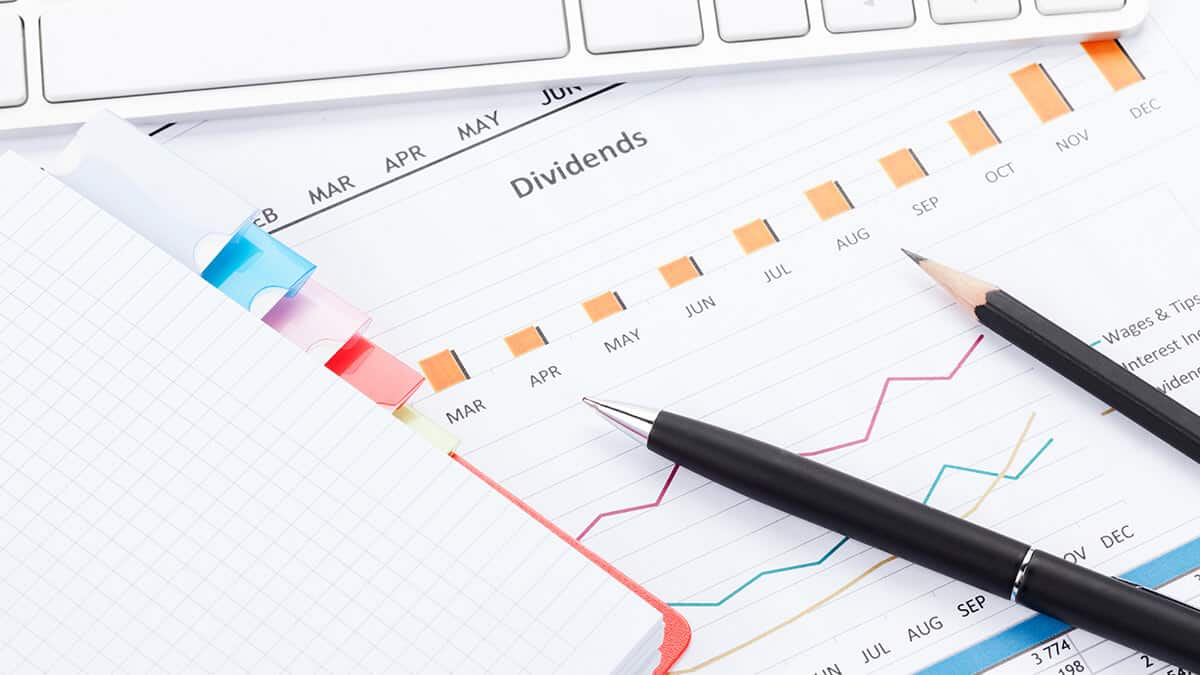In this guide
Many Australian listed companies, the banks and big miners in particular, are known for paying reliable dividend income, with an average dividend yield of just over 4% over the past 40 years.
But dividend yields are even more attractive when franking credits are included, especially for SMSF investors in retirement phase. But before we get to that, let’s brush up on franking.
What are franking credits?
Franking credits represent tax a company has already paid in Australia on any profits it distributes to shareholders by way of dividends. The company tax rate in Australia is currently 30%, or 25% for companies with turnover of less than $50 million.
Shareholders can then use these franking credits, also known as imputation credits, to offset their tax liability on other income, including salary, at the end of the financial year. People who pay no tax, notably SMSF investors in retirement phase, can claim a full tax refund from the Australian Taxation Office (ATO).
If your marginal tax rate is less than the company tax rate of 30%, you would be eligible to receive a refund of the difference between the franking credit and your tax payable.
2026 SMSF calendar
Our free calendar includes due dates for important documents plus suggested dates for trustee meetings and other strategic issues for your SMSF.
"*" indicates required fields
That is why SMSF investors are so attracted to shares in Australian companies that pay fully franked dividends.
Super funds pay a top income tax rate of 15% and no tax on the earnings or income of investments supporting a retirement pension. So refundable franking credits can boost the income yield of an investment substantially.
Here’s how.
How it works
Franking credits have different impacts depending on your marginal tax rate and whether your share investments are held inside or outside super.
It’s no wonder retirees and people with their own SMSF have been flocking to shares with high dividend yields. Not only are dividend yields higher than you can earn by putting your money in the bank, but they offer potential tax benefits.
What dividend yields are on offer?
For decades now, popular stocks such as the big four banks and the mining giants have provided grossed up dividend yields (including franking) in the range of 4% to 8% and sometimes considerably more (see table below). When capital appreciation is taken into account, Australian shares have provided long-term wealth creation. The All Ords accumulation index (total return from share prices and dividends, but not franking) has averaged 13% per year since 1980.
However, it’s important to understand that companies can sometimes cut their dividends in response to market conditions. For instance, during the COVID pandemic, many companies cut or paused dividend payments, and this reduced the overall market dividend yield from the historic average of just over 4% to 2.6% by April 2021.
The dividend yields of the banks were particularly hard hit because of their exposure to the economic downturn that followed, but also because their share prices soared as the market recovered. As a share price rises, the dividend yield falls (see note below).
The table below shows some of the top dividend yields for popular stocks on the ASX in March 2025, the grossed-up yield (including franking) and the franking percentage. This is not a recommendation for any of the companies listed, simply an illustration of the yields available.
As you can see, franking can add 2% or more to the yield.
| Company | Dividend yield | Gross dividend yield | Franking |
|---|---|---|---|
| Woodside Energy Group | 11.67% | 16.68% | 100% |
| Myer Holdings | 11.39% | 16.27% | 100% |
| Newcrest | 10.96% | 15.65% | 100% |
| Fortescue Metals Group | 7.07% | 10.10% | 100% |
| Nine Entertainment | 6.67% | 9.52% | 100% |
| Insurance Australia Group | 6.22% | 7.02% | 30% |
| BHP | 6.20% | 8.86% | 100% |
| ANZ Banking Group | 5.92% | 7.86% | 76% |
| Westpac Banking Group | 5.23% | 7.48% | 100% |
| National Australia Bank | 5.22% | 7.46% | 100% |
Source: MarketIndex, 12 March 2024.
The 45-day rule (holding period rule)
A high, fully franked dividend is a powerful attraction for anyone seeking to maximise the income from their investments. But you can’t just buy a stock for its dividend one day and sell the next. There are rules.
Super knowledge is a super power

"*" indicates required fields
To be eligible for franking credits you must:
- Hold your shares for a minimum of 45 days, excluding the days of purchase and sale
- Purchase the shares before the ex-dividend date
- Be holding the shares on the ex-dividend date, although you can sell on this date.
The 45-day rule doesn’t apply if you are an individual taxpayer and the total franking credits being claimed are less than $5,000 for the financial year. See the ATO website for more details.
Retirement income strategy
Most of Australia’s top companies emerged from the pandemic in fundamentally good shape and continue to offer attractive dividends enhanced by franking credits.
Even so, choosing shares based purely on dividends or tax benefits rather than looking at the fundamental value and future growth prospects of the investment is a dangerous game and could put your capital at risk.
Temporary cuts and suspension of some dividends during the pandemic also highlight the risks of relying too heavily on one investment strategy. All investors, whether in accumulation or retirement phase, need to diversify their income sources to reduce market, regulatory and other risks. That means looking beyond the banks and miners to other market sectors for high-yielding shares, but also looking to other income-generating asset classes.
For retirees in particular, it is important to have cash at hand to cover your spending requirements in the short to medium term to avoid liquidity issues or being forced to sell shares in a downturn.
Bonds and other fixed income investments traditionally offer regular income and have benefitted from high interest rates in recent years.
Residential investment property also provides reliable income. According to CoreData, the national average gross rental yield was 3.7% in the year to December 2023.
The hunt for yield
Not all companies take the same approach to dividends, with some historically distributing more cash to shareholders than others. When assessing a company’s dividends and franking policy, it’s a case of looking for quality not quantity.
When companies earn a profit, they must decide how much to pay shareholders in dividends and how much to plough back into the company to fuel growth. So a company with strong growth prospects may pay a relatively low dividend. At the end of the day, it’s the total return on your investment that counts, from a combination of long-term capital growth and the dividend income you receive along the way.
That said, franked dividends are popular for good reason and finding out who pays what has never been easier.
A simple Google search can give you information on a company’s dividend and franking policies, or you can go to their website.

Free eBook
SMSF investing essentials
Learn the essential facts about the SMSF investment rules, how to create an investment strategy (including templates) and how to give your strategy a healthcheck.
"*" indicates required fields
Financial advisers and brokers should be able to provide you recommended lists of high-yielding stocks with good fundamentals.
You can also find the information yourself via online broker sites or free sites such as marketindex.com.au, which regularly updates its list of ASX top dividend yields.
Happy hunting!



Leave a Reply
You must be logged in to post a comment.